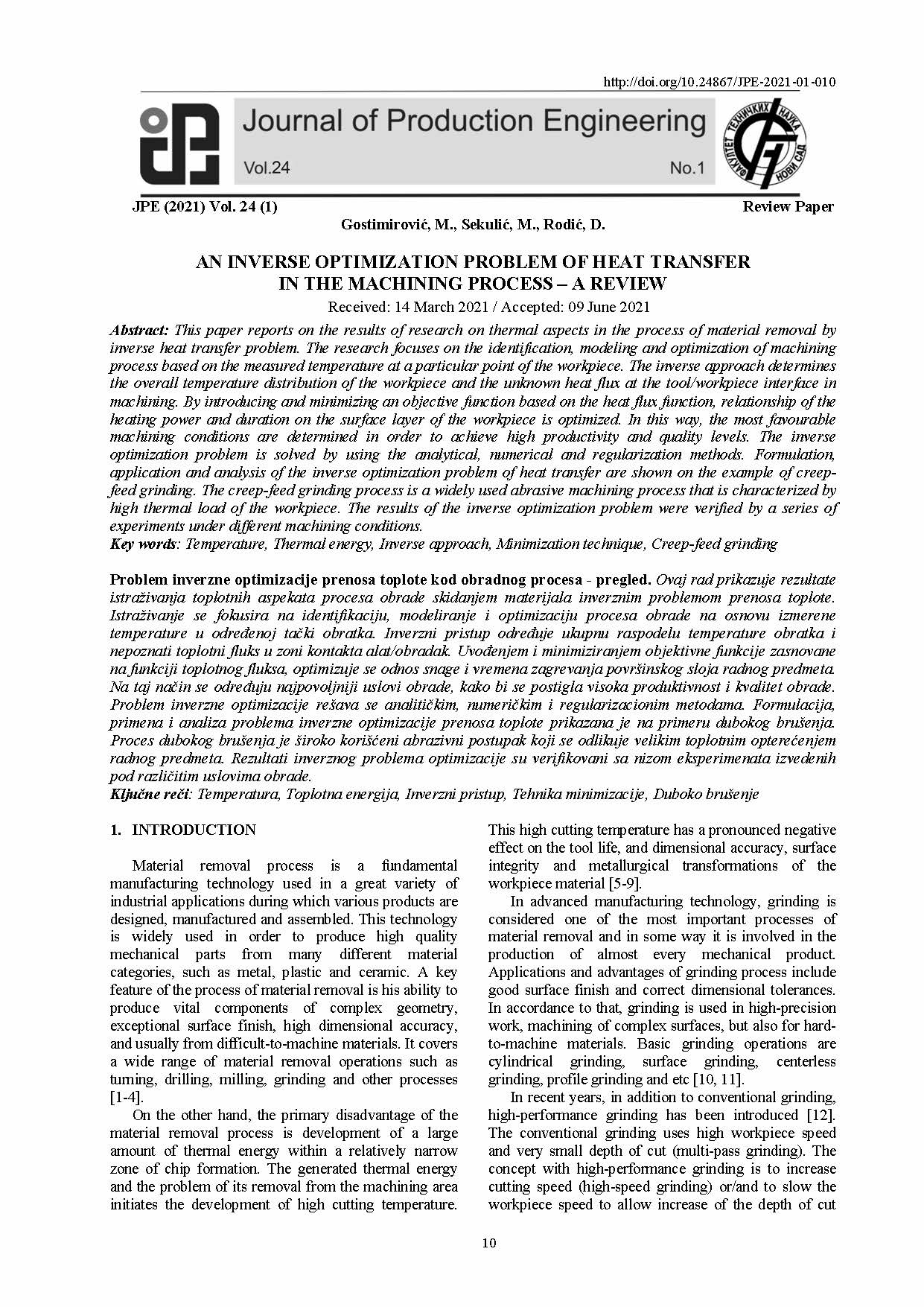An inverse optimization problem of heat transfer in the machining process – a review

Published 2023-10-10
abstract views: 23 // FULL TEXT ARTICLE (PDF): 16
Keywords
- temperature,
- thermal energy,
- inverse approach,
- minimization technique,
- creep-feed grinding
How to Cite
Copyright (c) 2023 Journal of Production Engineering

This work is licensed under a Creative Commons Attribution 4.0 International License.
Abstract
This paper reports on the results of research on thermal aspects in the process of material removal by inverse heat transfer problem. The research focuses on the identification, modeling and optimization of machining process based on the measured temperature at a particular point of the workpiece. The inverse approach determines the overall temperature distribution of the workpiece and the unknown heat flux at the tool/workpiece interface in machining. By introducing and minimizing an objective function based on the heat flux function, relationship of the heating power and duration on the surface layer of the workpiece is optimized. In this way, the most favourable machining conditions are determined in order to achieve high productivity and quality levels. The inverse optimization problem is solved by using the analytical, numerical and regularization methods. Formulation, application and analysis of the inverse optimization problem of heat transfer are shown on the example of creepfeed grinding. The creep-feed grinding process is a widely used abrasive machining process that is characterized by high thermal load of the workpiece. The results of the inverse optimization problem were verified by a series of experiments under different machining conditions.

